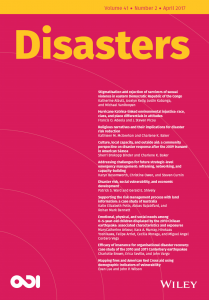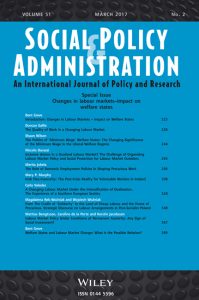Crime as a Mechanism for Governing
 Whether flipping through channels, listening to the radio, or reading the newspaper, it is evident that crime has secured a mainstay position in today’s media. In order to achieve high ratings, television networks and news outlets must fill their allotted time slots with only those headlines sure to popular attention (see Best, 2004). Oftentimes, those stories and reports are generated by sensationalizing criminal events. However, the seemingly overrepresentation of crime and delinquency is not the focus for this essay. Rather, it appears that crime has become a generalized preoccupation that has transformed a number of U.S. institutions (see Hudson, 2003). More specifically, crime – and societies growing fear of crime – has become a mechanism through which a new mode of governance has emerged.
Whether flipping through channels, listening to the radio, or reading the newspaper, it is evident that crime has secured a mainstay position in today’s media. In order to achieve high ratings, television networks and news outlets must fill their allotted time slots with only those headlines sure to popular attention (see Best, 2004). Oftentimes, those stories and reports are generated by sensationalizing criminal events. However, the seemingly overrepresentation of crime and delinquency is not the focus for this essay. Rather, it appears that crime has become a generalized preoccupation that has transformed a number of U.S. institutions (see Hudson, 2003). More specifically, crime – and societies growing fear of crime – has become a mechanism through which a new mode of governance has emerged.
After the late 1960’s, there were a number of large scale shifts within the U.S. Against the backdrop of social conflict, cultural diversity, and shifts in political ideology, a growing unrest quickly emerged. Crime rates, having been relatively low, had reached a critical threshold; attracting significant media and political attention. These turbulent conditions represented the government’s inability to control criminals and act in the best interests of its people. Simon (2007) proposes that, after the 1960s, the collective trust in the state to provide security and social welfare died with rising crime rates, the collapse of the progressive agenda, and fall of the New Deal political order.
No longer seen as effective, nor trusted by citizens, the state underwent a crisis of legitimacy. Attempts to alleviate the lack of sovereignty resulted in the state’s adaptation toward relying on new forms of governance. Recent theorizing, much like Garland’s (1997, 2001) work, attempts to understand contemporary crime control within large scale social, cultural, and political shifts. Garland (2001) argues that “penal welfarism” that characterized the state during the early to mid-1990s has been dismantled for it failed to secure the public from the risks connected with crime. In its place has risen a new crime control initiative that has ushered a bourgeoning “culture of control.”
Simon (2007), more specifically, uncovers how politicians were able to – once again – garner support in a new era of social governance. In order to build and mobilize popular support, politicians and legislators exploited people’s escalating awareness and bourgeoning fear of crime. That is, mounting insecurities around crime enabled politicians to frame citizens as (possible) victims to gather support for new – oftentimes more punitive – legislation. In essence, individuals become governed through crime under an increasingly penal system. Essentially, crime became as new mechanism of coercion and control.
Perhaps one of Simon’s (2007) more crucial insights is that “governing through crime” does not focus solely on the troubled or poor in attempts to manage, repress, or control. Rather, this new paradigm promotes the “self-governing” routines of people who are “eager consumers of public and private governmental tool against crime risk” (Simon, 2007: 16). Now, crime fear has influenced the once private space of the family, the development environment of education, and the productivity of the office. While criminal justice was once reserved those deemed “criminal”, it seems that crime control has dispersed among the population.
Instead of prison cells and mandatory minimums, individuals take only the safe streets; we allow surveillance, and security officers with legal jurisdiction; we buy fortified SUVs and homes while living in gated communities. By constructing the victim as the ideal, governmental institutions have exploited the fear of crime for the purposes of controlling those once not reached by crime control efforts.
Read: Simon, J. (2007) Governing Through Crime: How the War on Crime Transformed American Democracy and Created a Culture of Fear. Oxford: Oxford University Press.
Read: Garland, D. (2001) The Culture of Control: Crime and Social Order in Contemporary Society. Chicago: University of Chicago Press.
Read: Green, D. (2012) Punitiveness and Poltical Culture. Sociology Compass, 6(5): 365-375




